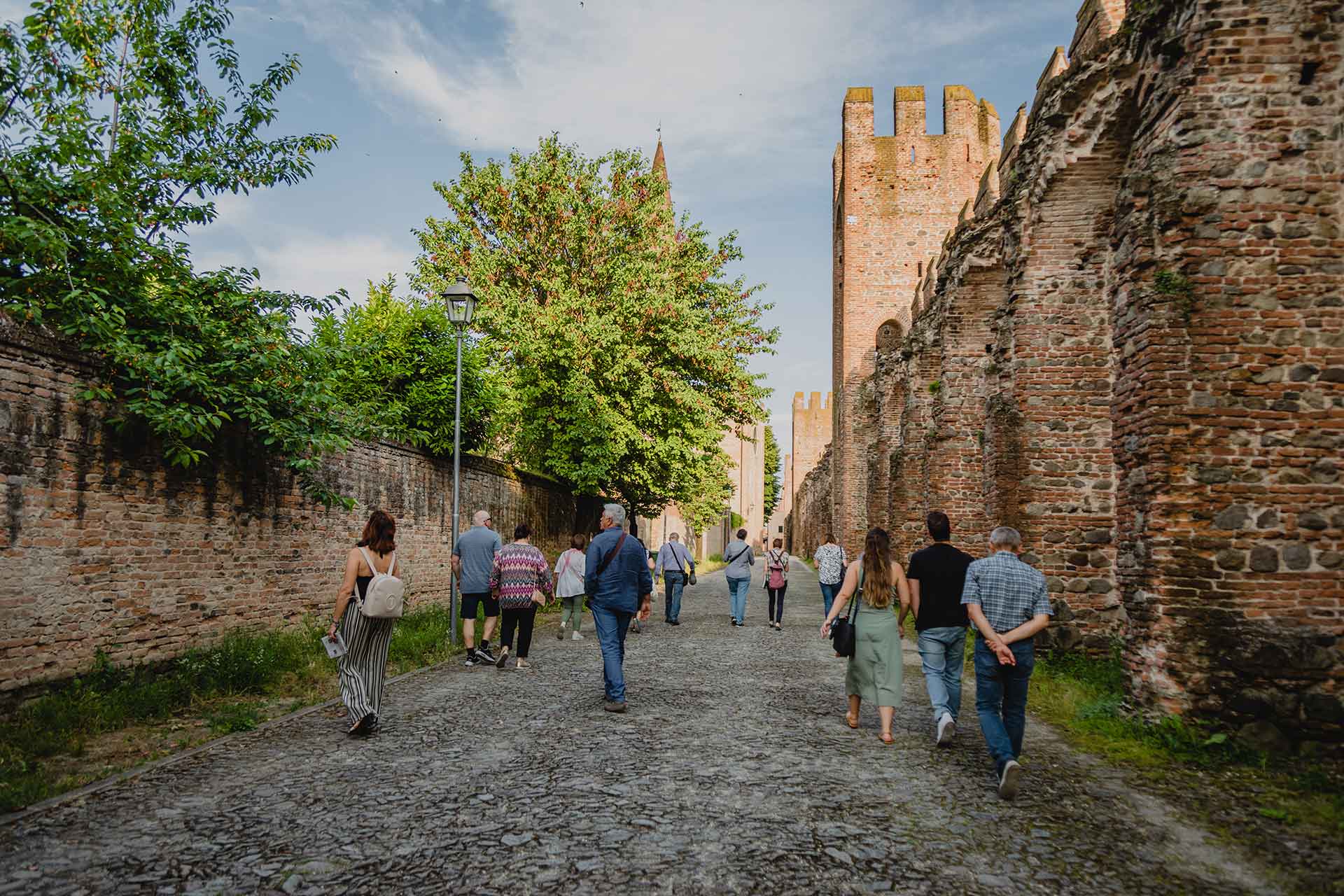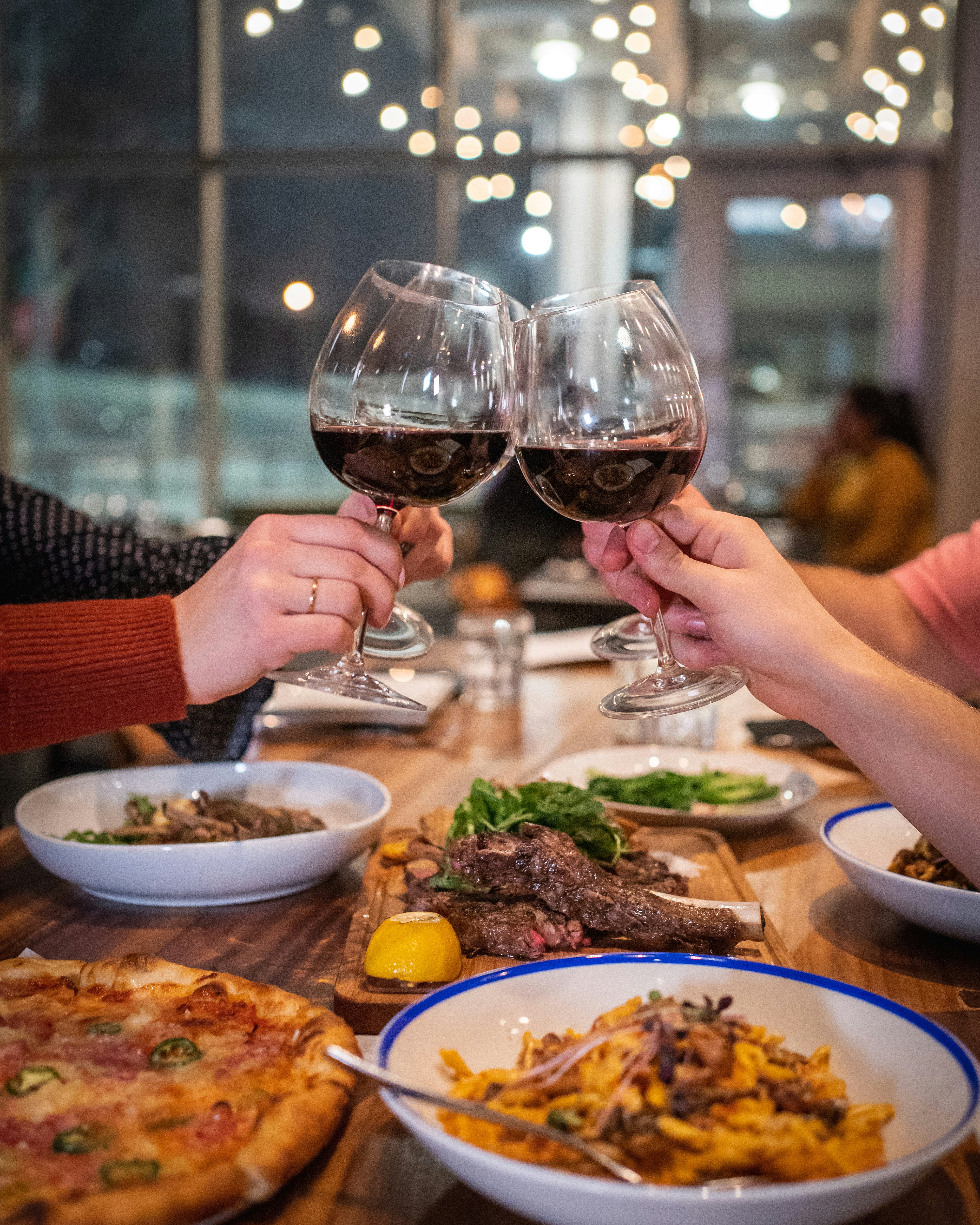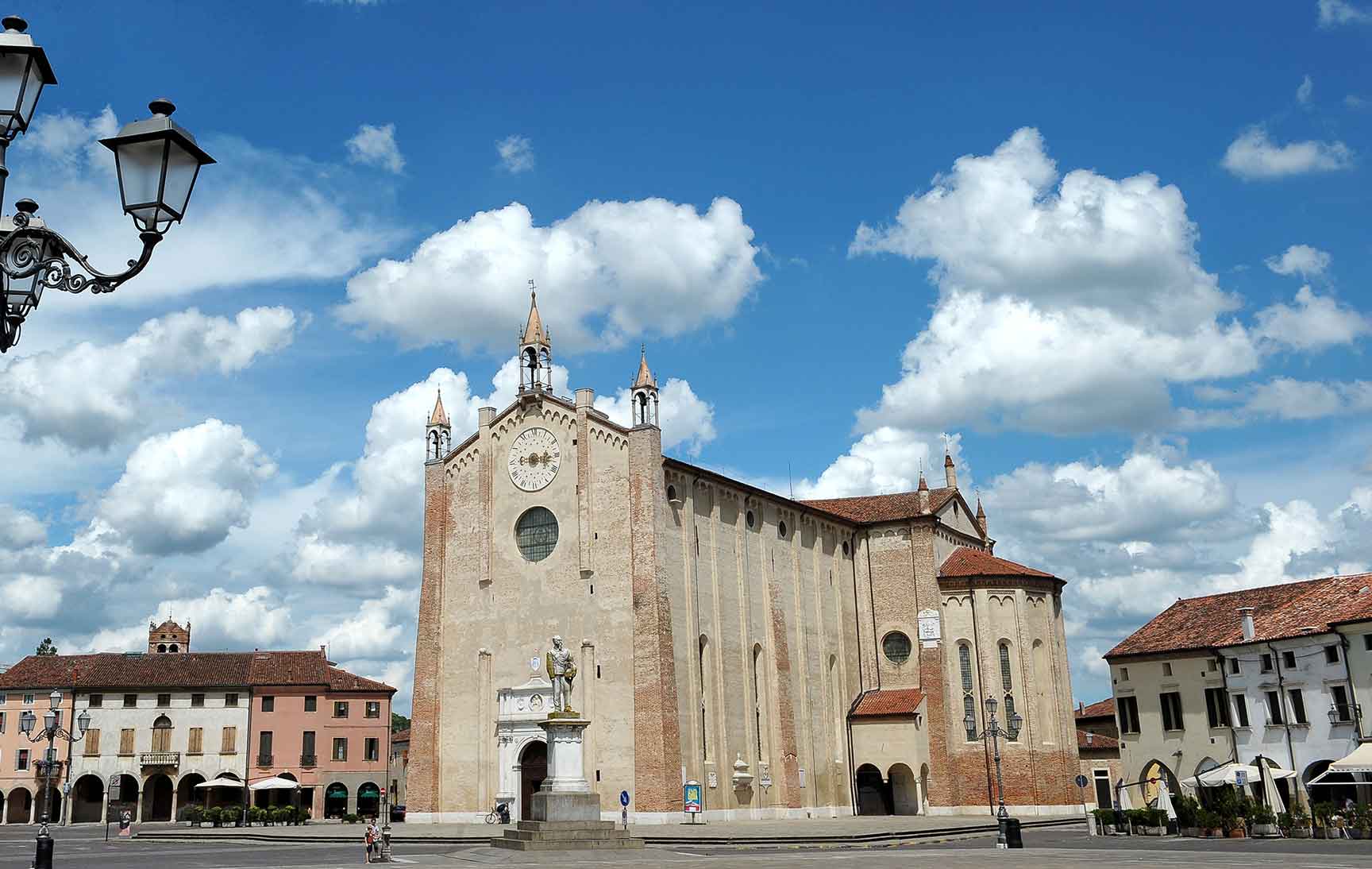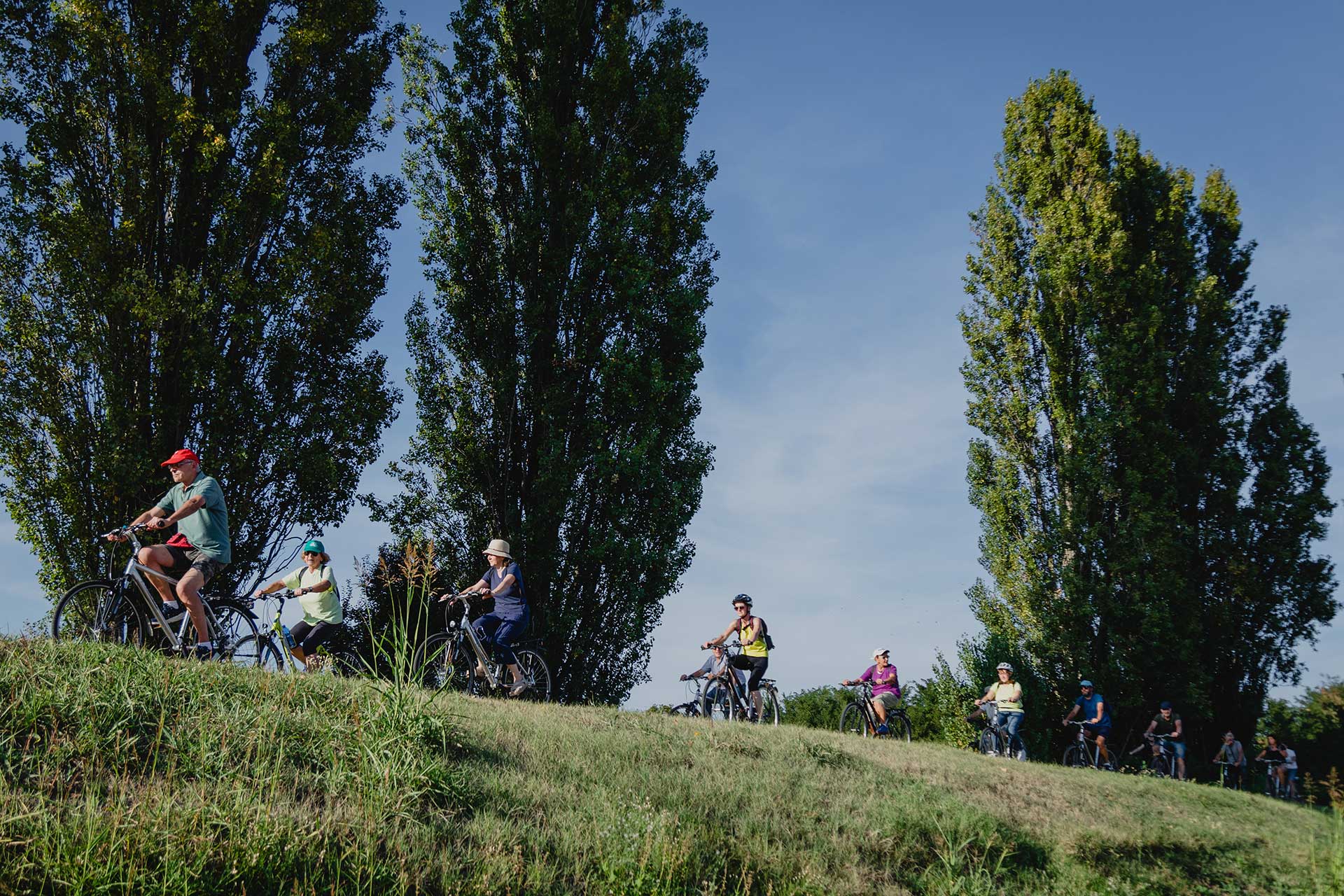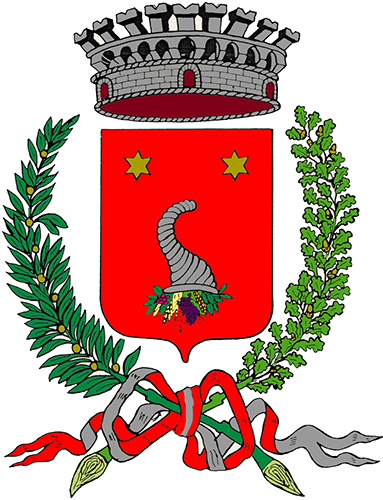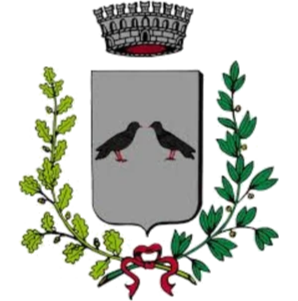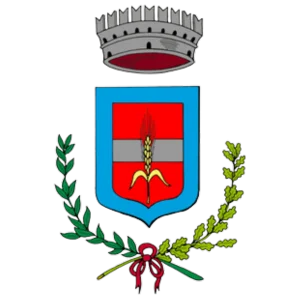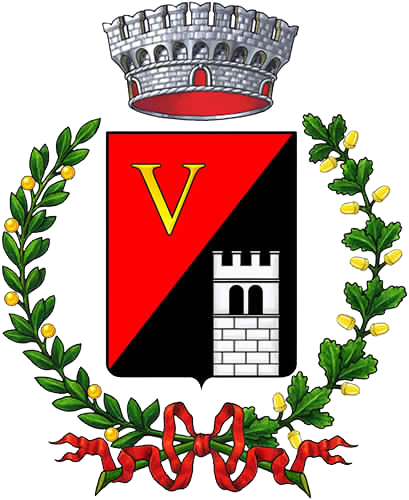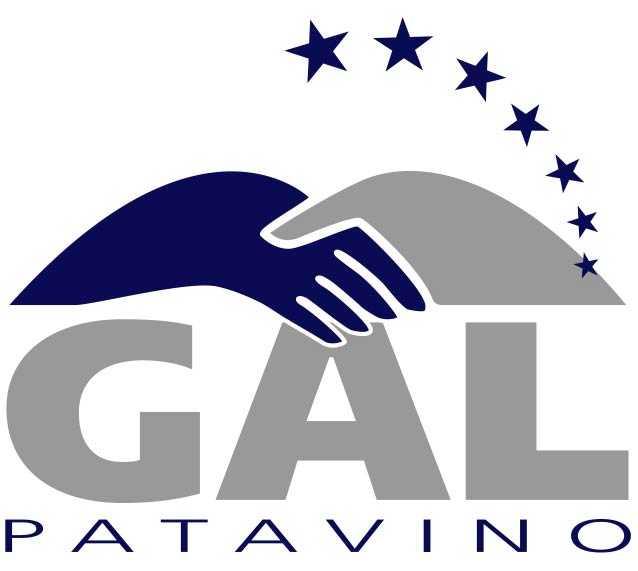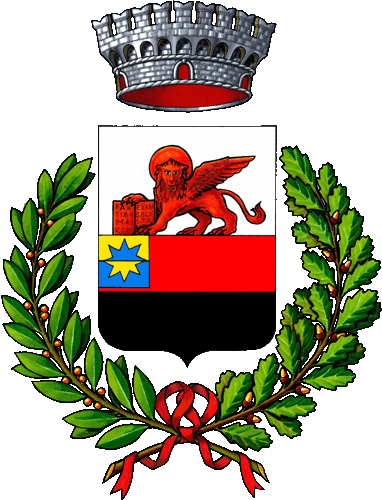
Montagnana
Montagnana is surrounded by 2-kilometer-long fourteenth-century city walls, with 24 towers and 2 imposing gate castles. Not long ago around it, many finds of Protovenetian settlements and other of the Ancient Venetians which date back to the 8th-6th centuries bC. During the Roman domination (already around the 2nd century bC) the via Emilia Altinate passed through our lands and near the current town there was the river ‘Athesis’ (Adige). Here it was built the Roman castrum, a strategic fortified bridge and a small river port. It was on such facilities and buildings where Montagnana was built.
The town name has apparently changed over time: from Enianum to Anneianum, then Fundo Eniano, etc. Already at the time time of the Ancient Venetians there was a defensive building on a mota or small hill, this is why we can suppose that from Mota Anneiani or Mons Anneianum we got to Montagnana. In 589, the river Adige broke its banks (this event was called Rotta della Cucca) and flooded all the town and the surrounding lands, which became lakes and marshlands. At that time, the Lombards controlled these lands, and it was at that time that Montagnana was appointed Caput Scodesciae or Sculdasciae, meaning they were the leading town of the territory. Around the year 800, with the Frank domination, the town was part of the Comitatus of Monselice, and uncle the year 1000 it was governed by German princes and bishops. It will then depend on the Estensi, and will be an actor in their fights against Ezzelino III da Romano. As a new emissary of the emperor Fredrick II, Ecelino took Montagnana and set it on fire in 1242. Then, he had built a new village around the high tower which took his name, Torre Ezzelina.
In the 1300s, Montagnana was a stronghold of Padua under the Carraresi, and in 1405 the Serenissima made a triumphant entrance in our town. For a few centuries, some noble families settled inside the walls, like the Gattamelata and the Da Narni. Some palaces were built, and some men of culture, science and art came here, as Giovanni Buonconsiglio, Paolo Veronese, Giorgione, Lorenzo da Bologna and Andrea Palladio. Thanks to art and science, our town lived its Renaissance. Nowadays, our cathedral testifies all this beauty.
Casale di Scodosia
There is no certain news of this community until 1099, when its little church becomes a quite important pieve (parish) with a baptismal font and whose bell tower can still be seen. In the difficult time of the Middle Ages, when the Estensi, Ezzelino III da Romano and the Carraresi were in the area, Casale comes up when some clashes between factions are reported. Once the Serenissima Republic of Venice arrived, also for Casale as for all the Sculdascia finally starts a long prosperous period. South-East of Casale, there is the pleasant village of Altaura with Villa Correr (17th century) and the annex Church of Santa Margherita, a stop for food and shelter for the pilgrims.
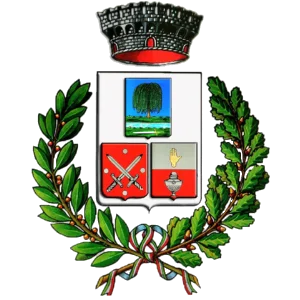
Borgo Veneto
Megliadino San Fidenzio Saletto and Santa Margherita d’Adige are part of the Municipality of Borgo Veneto.
Like many other villages of the Sculdascia, Megliadino S. Fidenzio originates in the Roman or maybe even pre-Roman time, as shown by many finds. When in 964, the Bishop of Padua Gauslino Trasalgardo decided to move the body of San Fidenzio to this land after it was discovered in Polverara, the ancient oratory of San Tommaso became one of the most important religious centers of the area. In the late 1800s the church was destroyed to make room for the current Cathedral which still keeps the remains of the glorious saint in its crypt.
Saletto takes its name from a place rich of willow trees. The village started to be settled in the Roman time on the river Adige. Around the year 1000, Saletto was already mentioned in some pieces of news which reported about this village as part of the Este family domination first, and to the Vangadizza Abbey later. Further on, it will be given to the Capodivacca family, and at the beginning of the 1400s the village will move from the surrounding area of the ancient precious church of San Silvestro towards the actual position. This is near the small oratory of San Lorenzo, where pilgrims could find shelter.
Also Santa Margherita d'Adige, as other neighboring villages, is of Roman origins. After the Roman domination it was controlled by the Lombards, and then by the Estensi and the Carraresi. However, it had its best years under the Serenissima, when it joins Montagnana with other municipalities., a nice town in the green and fertile surrounding countryside.
Merlara
The village stood around the castle of the old family Da Merlara already since before the Adige flooding in 589, when it is reported that the village and the castle were covered by water. Merlara was built again where it still is nowadays and it was controlled as all the other villas first by the Lombards, then by the Estensi and the Carraresi. It was then ransack by Cangrande Della Scala, and conquered in 1339 by Giangaleazzo Visconti. The Serenissima Republic of Venice ruled over the lands of Merlara between 1405 and 1797, when the Venetian noble households, and in particular the powerful Barbarigo family, took control of most of its territory. Merlara was the last village to become part of the Magnificent Community of Montagnana.
Megliadino S. Vitale
We know that Megliadino San Vitale was very lively during the Roman time. After 589 and the Rotta della Cucca, when the river Adige broke its banks, the power of Ravenna influenced this area, probably taking advantage of the lack of interest from the Lombards for these wetlands. The worship of San Vitale is probably the most relevant evidence off this influence from Ravenna, which survives also in the world Icona (icon) or Ancona from which derives the name Anconese of the other ancient church of Megliadino San Vitale and where there still is a mysterious icon. Also Megliadino in the Middle Ages and then with the arrival of the Serenissima was involved in the same events of the other villages of the Sculdascia.
Urbana
Some scholars believe that the place name Urbana comes from the Roman cognomen ‘Urbanus’ which has been found on many gravestones in our countryside. Other suggest it comes from the Quinta Legione (fifth legion) named Urbana, to which many veterans belonged and who received these lands in merit for their contribution to the war. They moved here with their families and help, and built a village. A couple of kilometers west of the village there is the monastery of San Salvaro, on the right bank of the river Fratta, on a quiet and picturesque setting. The ancient monastery was built around the 1000 and now hosts the Museo delle antiche vie (museum of the ancient routes) and in the annexed church you can still appreciate a valuable fresco of Christ Pantokrator.

